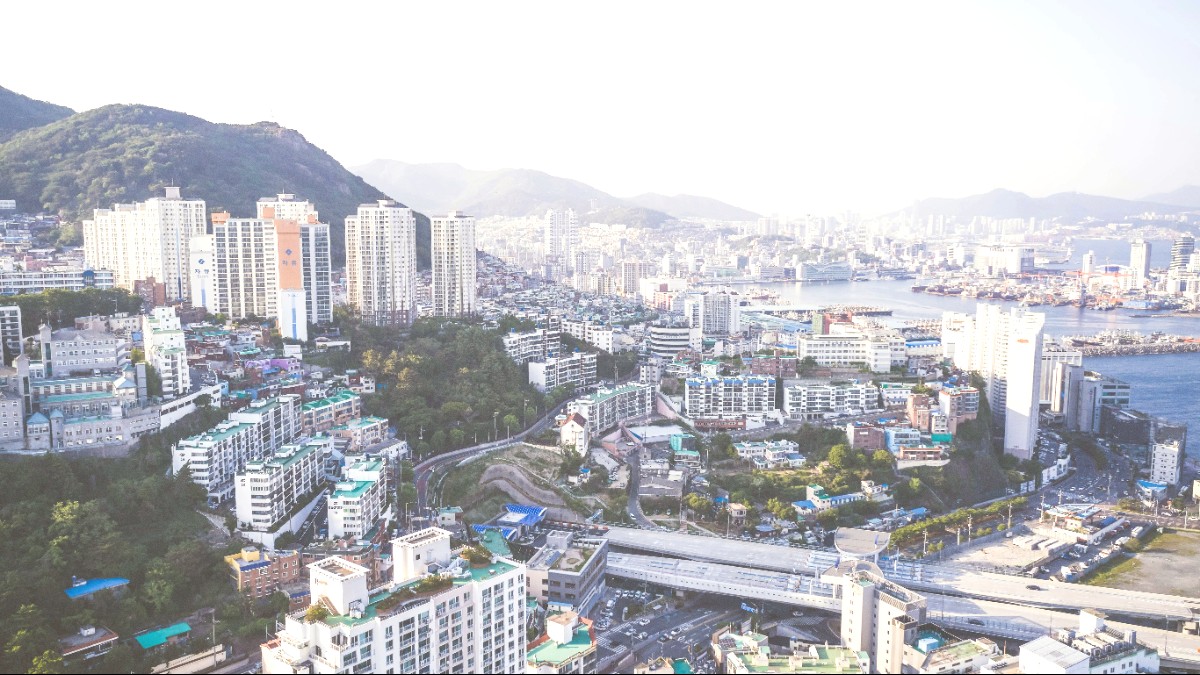
Gyeongsangnam Do, South Korea
Busan cuisine has strong influence from its access to fresh seafood. Historically, as a major port and a refuge during the Korean War, the city developed hearty dishes.
Flavors tend to be robust, savory, and often spicy, with a well-balanced interplay of sweet, sour, and umami notes. Regional variations include less emphasis on beef BBQ and more focus on pork and unique seafood.
Many Korean meals are communal. Dishes go to the center for everyone to share. Order several dishes.
Use a spoon for rice and soup. Use chopsticks for side dishes and mains. Do not pick up bowls.
Serve elders first (food and drinks). Use two hands when pouring or receiving a drink for an elder.
Busan's quintessential dish: hearty pork soup with rice, rich milky broth, tender pork slices.
Customize with chives, salted shrimp, chili paste.
Cold wheat noodle dish, lighter and chewier than Naengmyeon. Available in broth or spicy sauce.
Refreshing, especially in warmer weather.
Busan is famous for its fish cakes, often skewered and served in hot savory broth from street stalls.
Perfect for a quick snack. Samjin Amook is a popular brand.
Soju (distilled spirit), Makgeolli (milky rice wine), and various traditional teas (Green tea, Omija tea).
Patbingsu (shaved ice with red beans), and various Tteok (rice cakes).
Explore upscale restaurants in luxury hotels (e.g., Park Hyatt, Paradise Hotel) or areas like Marine City in Haeundae.
These are abundant throughout the city, comfortable dining with a wide range of Korean and international dishes.
Markets and food alleys offer affordable, local delights and a bustling atmosphere.
Seomyeon Dwaeji Gukbap Alley for pork soup. Nampo-dong Ssiat Hotteok Stalls for sweet pancakes.
These concentrated areas make finding local specialties easy.
CU, GS25, 7-Eleven are widespread, offering affordable ready-to-eat meals, snacks, and drinks 24/7.
Good for quick, budget-friendly options.
Pizzerias and pasta shops in tourist areas.
Izakayas and sushi restaurants.
Various Chinese restaurants available.
International chains found readily.
Options are limited. More concentrated in Seoul. Consider self-catering or international restaurants.
Dedicated eateries are rare.
Can be challenging due to common use of soy sauce and wheat flour in many dishes.
Safer choices: grilled meats (confirm marinades), rice-based dishes, fresh vegetables, plain fish.
Clearly communicate any allergies using a translation app or a written note.
When in doubt, opt for fresh fruits, plain rice, or dishes where ingredients are easily identifiable.
Learn to prepare classic Korean dishes like Bibimbap, Kimchi, or Bulgogi.
Join a guided tour of local markets or street food alleys.
Visit Gijang for crab and anchovies to see local product sourcing.
Busan's food reflects its port city role and Korean War impact. Ingenuity shaped dishes like Milmyeon and Dwaeji Gukbap.
A story in every bite.
Bold, savory, and often spicy flavors define Busan's cuisine, creating a memorable dining experience.
A true taste of the sea and land.
Visit traditional markets for fresh ingredients and authentic street food experiences.
Numerous mid-range restaurants offer comfortable settings for Korean and international dishes.
Luxury hotels host fine dining establishments for special occasions.
Always verify operating hours before visiting, especially for smaller markets and specialized eateries.